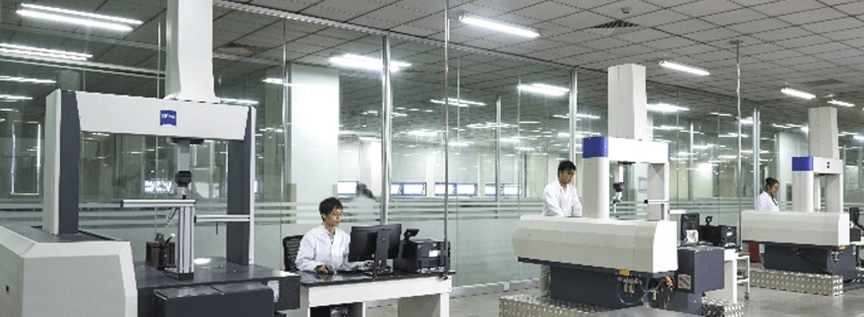What is Metrology Testing and Why It Is Important for Machined Parts?
Ensuring parts function as intended is paramount for all industries. If even one measurement is inaccurate, this issue may cause an application to fail. This failure could lead to increased wear and tear to components, equipment failure, and workplace accidents. There are several methods to check the accuracy and quality of parts. Three methods are quality assurance, quality control, and metrology.
Quality assurance and quality control go hand in hand. Quality assurance focuses on providing confidence that all requirements for quality will be fulfilled for the produced part. Quality control is where those requirements are checked so if a problem is discovered, it can be rectified before the part is shipped out to the customer.
Metrology is a methodology based on measurement accuracy. This method relies on theoretical and experimental determinations to guarantee measurement results.
What is Metrology Testing?
Manufacturers use metrology testing to check that parts are precisely measured and manufactured from a global standpoint. Manufacturers around the world use different measurement systems, manufacturing operations, and assembly processes.

However, the machined parts may not stay in their respective countries where it was first made. These parts may become placed in machines in other countries that use different measurement systems. The parts must also fit properly in these machines.
Metrology testing checks that the machined parts are produced accurately based on their measurement drawings. The tests check that the manufacturer’s measurement tools are calibrated to take into account international measurement standards.
Purpose of Metrology Testing
Metrology testing is performed continually to ensure that precision inspection tools maintain their calibrations. When a machine tool or an inspection tool is used constantly to produce low to high volume parts, it may lose accuracy due to the wear and tear of the tools or when components become shifted. This loss of calibration can instantly be detected with metrology testing.
Once discovering that the measurement is off, the machine tool or inspection tool becomes recalibrated to meet the measurements detailed in CAD or design drawings. Through metrology testing, machined parts maintain industry standards and meet accuracy requirements.
Metrology Testing Machines
The types of metrology testing tools used by a manufacturer will depend on the equipment used in the production process and the parts that are manufactured.
The use of Coordinate Measurement Machine is just one of the examples. Coordinate measurement machines (CMM) consist of a coordinate system and a probe to analyze the geometric points along the machined part to check the measurements. Types of CMMs used include:
- Cantilevers for master parts
- Gantry for large and heavy parts
- Bridge for mold, machining, and stamping
- Horizontal Arm for large and small parts in industries such as defense, aerospace, and appliance
- Touch Trigger for measuring discrete points and used for 3D geometric parts
Portable CMMs: These are contact and non-contact handheld inspection tools for analyzing 3D geometric parts, tolerances, and dimensional measurements.
Vision Probes: Vision probes will take images of smaller 2D parts to perform high-speed measurements.
Laser Probes: Laser probes use light triangulation to perform component measurements.
Interferometers: Interferometers use merging light sources to measure surface variations in parts.
The use of metrology testing is vital to ensure accuracy and repeatability in machined parts that can be used in applications around the world. Here at Impro, we use a variety of metrology tools in our processes. Speak with our team about your next project.